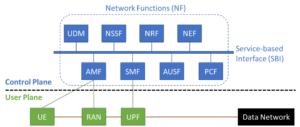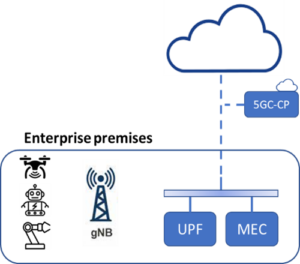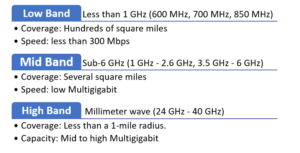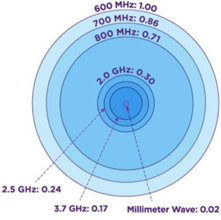Introduction to Private 5G Networks
A Private 5G Network is an enterprise-dedicated network tailored to deliver the latest advancements of 4G LTE and 5G technology and drive the digital transformation of businesses and organisations across industries.
Private 5G provides secured communications with high bandwidth, low latency, and reliable coverage to connect people, machines, and devices. Private 5G solutions are ideal for IoT-intensive applications like intelligent manufacturing and sensitive environments like ports and banks.
More securely and efficiently than public 5G and LTE networks, private 5G offers solutions that provide connections to authorised users only within the enterprise and processes the generated data locally, in isolation from the public network. Easy to deploy, operate, and scale to meet all operational needs.
Spectrum, Coverage and Speed
The range of a private 5G network can vary from a few thousand square feet to thousands of square kilometres, depending on the power of the radio transmitter, the band used, and the user's requirements. A typical 5G radio that operates on low, middle, and high bands provides the following frequency ranges:
Deployment Scenarios
The 5G system is disaggregated into independent components known as "network functions" (NF) that communicate through a standard API. These NFs are accountable for the operation of mobile networks, including authentication, IP address allocation, policy control, and user data management. Service-Based Architecture makes the 5G system very flexible and able to add new services and applications to meet the needs of any industry.

Control and User Plane Separation adopted in the 5G architecture allow operators to separate the 5G control function from the data forwarding function. For example, the control plane can be deployed centrally, whereas the user plane function (UPF) could be deployed flexibly at any location within the network to accommodate the various data processing requirements.
The private 5G network architecture can be deployed in different scenarios to meet each customer's needs. We can categorise the deployment based on the level of isolation and integration with the public network into three scenarios as follows:


Enterprise hosts and operates the 5G network (complete set: gNB, UPF, 5GC CP, UDM, MEC), where the network is physically isolated from the public network. Despite the high cost associated with deploying this scenario, it guarantees complete data security, reduces the likelihood of a data breach, and provides ultra-low latency connections.
A shared private 5G network scenario uses an operator's public network to reduce installation costs. Based on the business needs, the customer can choose the proportion of components they host and manage locally, and the elements will share with the mobile carrier.
MEC and UPF may be deployed on-site on premises like smart factories, stadiums, and cinemas, enabling a private 5G architecture with minimal latency and future changes. In addition, the business owner can control the radio access network locally to allow quick and reliable connection (RAN).
Depending on the application’s requirements, a Radio Access Network (RAN) may be installed on-site and connected to the public network via a dedicated data slice that provides private 5G service.
Private 5G Use Cases
Zinkworks provides a Networked OT Orchestration platform purpose-built for Industry 4.0 and private 5G. Customers can use various automation solutions and ML-based prediction models developed by Zinkworks to monitor the network's performance and manage network resources more efficiently and securely. In addition, customers can create policy and service profiles with customised bandwidth, latency, and quality of service (QoS) to meet every application's needs.
Written by Mohamed Ibrahim.


